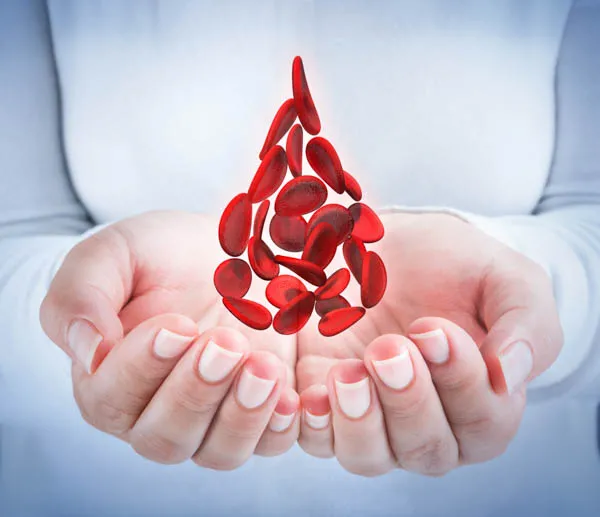For every Parent, the priority is the health of their child. In honor of July being Cord Blood Awareness Month, we have compiled the most important information about cord blood stem cells. This material in the future can save the health and life of the child, its siblings and immediate family, and can only be collected during delivery.
What are stem cells from cord blood?
Stem cells are unspecialized multipotent cells of the human body, which means they are primordially immature and can differentiate into other cell types. These properties are now used in various fields of medicine. Stem cells are found in cord blood and umbilical cord, among other things. In the bone marrow. For many years, the umbilical cord and its contents were considered, like the placenta, to be medical waste and disposed of by the hospital after delivery. Thus, the priceless stem cells contained in them were irretrievably lost.
Where are stem cells from cord blood used?
The list of diseases in which stem cells are used to treat includes more than 80 disease entities. Stem cells derived from cord blood are most often used to treat hematological and oncological diseases. Besides, they are also used in the treatment of autism spectrum disorder, cerebral palsy or amyotrophic lateral sclerosis. This shows that medicine and science surprise researchers all the time, and no one can predict how future discoveries will affect the use of stem cells.
How does the collection of cord blood proceed?
Cord blood collection is a completely painless and non-invasive procedure for both the baby and its mother. Parents report to the hospital for delivery with a special collection kit, which they receive from the stem cell bank after signing a contract. At the hospital, trained midwives collect the kit from Parents. Regardless of the type of delivery, the fact that cord blood is collected does not affect the timing of the baby’s unbirth. The moment of unbuttoning is decided by medical personnel based on the current organizational standard of perinatal care, their knowledge and the welfare of the mother and newborn. Then, under sterile conditions, the midwife collects the remaining blood in the vessels of the umbilical cord and placenta. The material is properly secured and transported to the laboratory, where the sample is examined, among other things. towards the presence of viruses, bacteria and fungi. Stem cells after the so-called. preparations are then frozen and stored in liquid nitrogen vapor at -190 degrees, so they do not lose their unique properties and can be used at any time in the future.
Advantages and limitations of cord blood
Umbilical cord blood, according to the words of Professor. Dr. hab. n. med. Mariusz Zimmer, is “one of the greatest achievements of medical progress.” As a source of precious stem cells, cord blood provides an alternative for many people struggling with various conditions such as blood cancers and incurable cerebral palsy. Many people wonder, then, what their advantage is over bone marrow-derived cells. One is that they can be used practically “on the spot,” without having to search for a tissue-compatible donor. In addition, cells derived from cord blood do not lose their properties and are “younger” than those contained in bone marrow. Transplantation of cells from cord blood also carries a lower risk of rejection. Cells from cord blood also have greater regenerative capacity than marrow. Another undoubted advantage is that standard transplants are reimbursed by the National Health Service. It is the Parents who decide whether they want to collect cord blood at the child’s birth and have the option, if necessary, to use it in the future.
Unfortunately, cord blood and stem cells are not a lifesaver for everyone. They are used in specific disease entities, the list of which continues to lengthen, and research into new applications continues.
What about public banks?
There are now both public and family banks. At family banks, parents are assured that the stored cord blood material from their child can only be used for their family members. In the case of public banks, it is necessary to relinquish the right to the stored stem cells. For this reason, they can be used, if necessary, by any patient from anywhere on Earth. Wanting to secure the future of your children, it is better to opt for a family bank to ensure that the stored material can be used for your family’s needs.
How much does cord blood banking cost?
Many people believe that the cost of cord blood banking is too high, causing them to forgo storing their baby’s stem cells. However, the fee system is structured in a very accessible way. The cost of cord blood banking is divided into three types of payment: ante-natal fee, post-natal fee and storage subscription fee. Antenatal fee, among other things. covers the cost of the collection kit, the cost of collection at the hospital, transportation and initial preparation. The postnatal fee covers the preparation of the blood for preparation, all the necessary tests on the sample and the freezing of the stem cells. The last fee, or subscription fee, covers the monthly cost of storing the stem cells and is about 50 zlotys, the cost of a pack of diapers or a telephone subscription.
Wanting to ensure a secure future for your child, it is worth making an informed decision about cord blood donation and stem cell storage. The decision to bank cord blood is a kind of life insurance policy and is not worth giving up. You only get the chance to collect cord blood once in a child’s life – at birth.
Rate this article:











